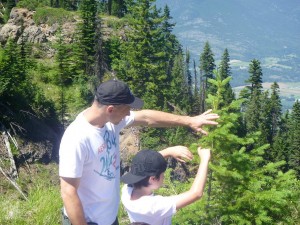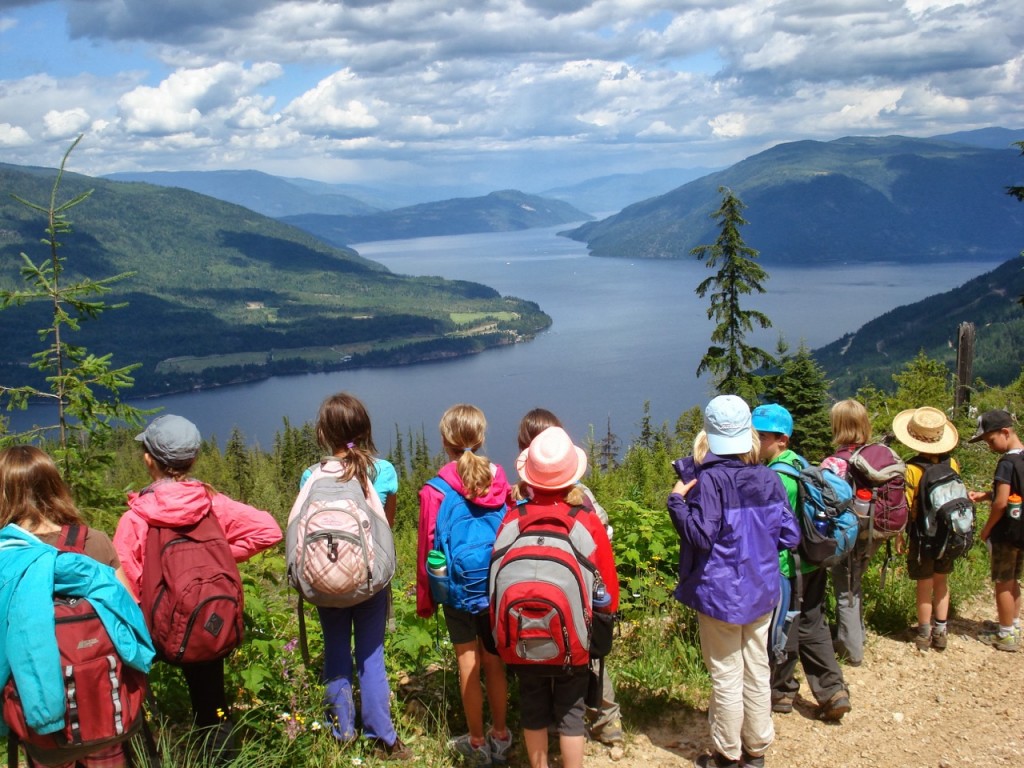 Lookout along the Larch Hills Traverse during the 2013 summer camp
Lookout along the Larch Hills Traverse during the 2013 summer camp
Nature deficit disorder may be more of a metaphor than a legitimate physiological or psychological condition, however it does describe a growing concern about modern society’s disconnection with nature as time in front of digital devices increases. Fortunately, an organization has formed in the Shuswap to address these concerns by fostering opportunities for young people to experience and learn about our natural environment. The Shuswap Outdoor Learning Foundation was founded in the spring of 2013 and one year later it received charitable status.
The foundation provides outdoor learning opportunities via two initiatives, the Shuswap Wild Wonders summer camps and the outdoor education program within School District #83. Beginning in 2012, the Shuswap Wild Wonders summer camps have provided outstanding outdoor experiences for youngsters aged 6 to 12. Last summer, there were four camps, including two with overnight camping.
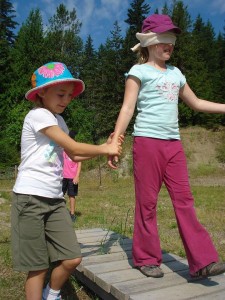 Learning trust is a first step
Learning trust is a first step
There are five objectives for the camps, beginning with the most important, safety and skill development. Once the children learn to stay together on trails, avoid risks and gain respect for nature they move on to improving their communication skills, developing trust and solving problems. After they complete this teambuilding phase they proceed to enhance their connection to nature through experience and discovery.
 So many things to learn about in the great outdoors
So many things to learn about in the great outdoors
The options exist for various mediums used for nature learning, including journaling, sketching, leaf presses and storytelling. As they link their days to nature, they begin to learn the names for local flora and fauna and improve their understanding of ecology, hydrology and geology. The final objective is stewardship, as the students develop an ethic of care for nature and eventually participate in restoration activities.
 The children gain more by working together as a team
The children gain more by working together as a team
The number of camps has grown exponentially, beginning with one in 2012, and occur at a number of sites, including the Larch Hills, White Lake, Mt. Ida, Perry River and the Enderby Cliffs. The response has been very positive, with parents exclaiming how their children have changed and are now eager to be outside to listen to the birds and identify plants. The instructors are elated, as their goal is for these camps to be a transformative experience for the children.
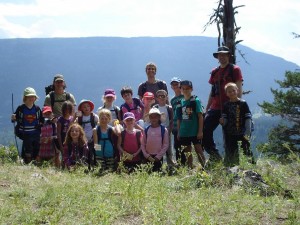 Given that each Shuswap Wild Wonder camps can only accommodate from 12 to 18 children, in order to reach more students, the foundation also partners with the school district to support the Outdoor Awesome Days, first in 2013 at Carlin with 135 students and this year at Little Mountain Park with 310 students. Three professional development days were also organized to provide training for teachers to foster outdoor education in the school district, in part by promoting the Shuswap’s growing network of trails as outdoor classrooms.
Given that each Shuswap Wild Wonder camps can only accommodate from 12 to 18 children, in order to reach more students, the foundation also partners with the school district to support the Outdoor Awesome Days, first in 2013 at Carlin with 135 students and this year at Little Mountain Park with 310 students. Three professional development days were also organized to provide training for teachers to foster outdoor education in the school district, in part by promoting the Shuswap’s growing network of trails as outdoor classrooms.
 Students get outside to learn year round thanks to the Outdoor Learning Foundation team
Students get outside to learn year round thanks to the Outdoor Learning Foundation team
In addition, last year teachers at Bastion School set up an outdoor classroom in the small forest on the school grounds using tarps and ropes and stumps for chairs. Students spent an entire week receiving their lessons outside in April and many are eager to repeat the project this spring. And Hillcrest School is planning to add a temporary outdoor classroom this year as well.
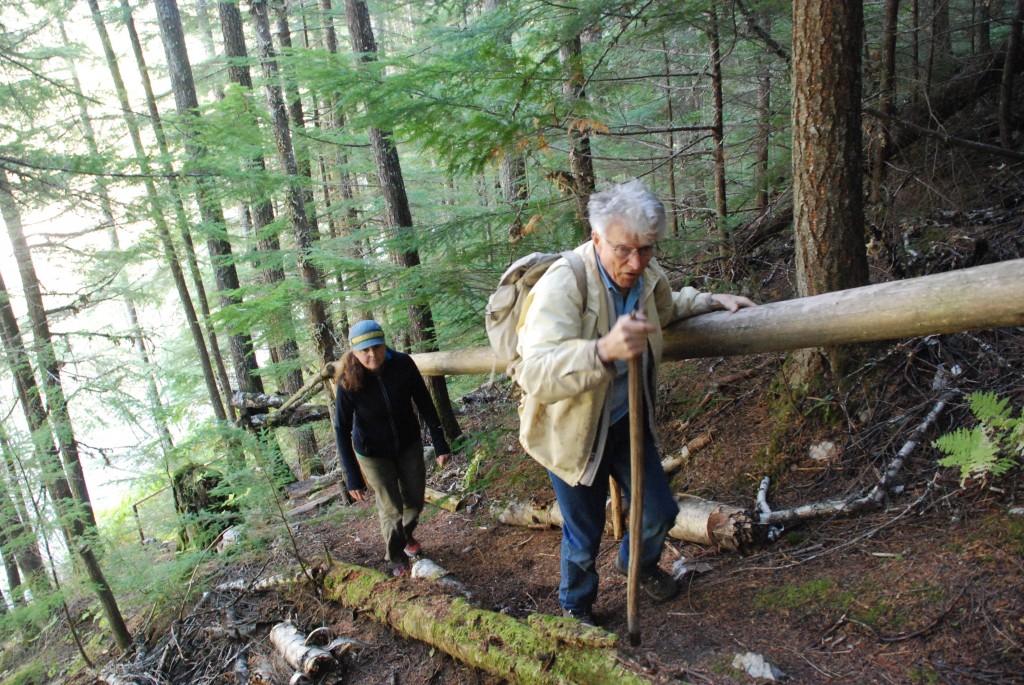 Peter Jennings led us on one his trails in North Fork Wild, Sept. 2011
Peter Jennings led us on one his trails in North Fork Wild, Sept. 2011
The Foundation is also in the early stages of an ambitious initiative to develop an outdoor education centre along the Perry River. It would be adjacent to the new North Fork Wild Regional Park just above the highway bridge in Malakwa. Peter Jennings, who still lives there, donated his property to the CSRD, which is in the process of improving the many trails that he originally designed and helped build. The Shuswap Trail Alliance is currently rebuilding the trails, which should be ready next spring.
Eight Shuswap Wild Wonder camps are scheduled for the upcoming season and there is a plan to create access opportunities to a broader spectrum of children. So far, two local businesses, Playfort Publishing and Nalu Clothing, along with the Shuswap Environmental Action Society have contributed funds and soon more businesses will be approached for their support.
The Shuswap is fortunate that seven young, forward thinking teachers and naturalists have dedicated their time and effort to provide outdoor learning opportunities and that they received support from the Trail Alliance. These leaders include biologist Jeremy Ayotte and teachers Geoff Styles and Ceren Caner, who in just three years have developed an outstanding service to our community.
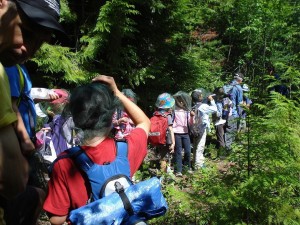 As their efforts expand, more young people will spend time outdoors and as a result, improve their physical and emotional health, creativity, and interpersonal relationships, as well as care more the Shuswap environment. Learn more about outdoor education in the Shuswap at www.outdoorlearning.ca.
As their efforts expand, more young people will spend time outdoors and as a result, improve their physical and emotional health, creativity, and interpersonal relationships, as well as care more the Shuswap environment. Learn more about outdoor education in the Shuswap at www.outdoorlearning.ca.
POSTSCRIPT
Helping get kids outdoors to experience and learn about the natural environment is one of the best new initiatives that is happening in the Shuswap recently. And the project dovetails perfectly with the work of the Shuswap Trail Alliance, which has been improving the opportunities to hike, bike, snowshoe, ski and paddle in our region.
Yet, the Shuswap has much work to do in order to catch up with other regions that have well-established outdoor schools, like McQueen Lake Environmental Education Centre in the Kamloops School District. Hopefully, as more schools and teachers join the outdoor education bandwagon, there will be an increasing amount of support from local organizations and businesses. As the lure of digital devices traps more young people into self-absorbed screen time, there is a growing need for outdoor learning alternatives.
